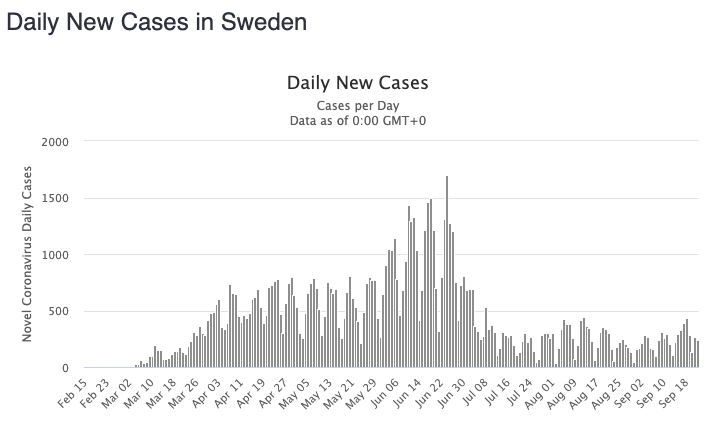Country flags new coronavirus rules after controversial policy
As a daunting second wave of coronavirus infections sweeps across Europe, one of the continent’s most divisive countries during the pandemic has shifted its stance on how to tackle the highly-infectious disease.
Sweden made headlines during the first wave of the pandemic for avoiding stringent lockdown measures, instead allowing relatively free movement of its residents and shielding the vulnerable and focusing on social distancing.
Under the guidance of the country’s chief epidemiologist Anders Tegnell, they believed a lockdown where businesses would close would have minimal effect.
While it initially led to the highest infections and deaths per capita in Europe, its infection rate has since dropped off despite a surge in cases in mainland Europe and the UK.
However Dr Tegnell said on Wednesday (local time) the Scandinavian country would now look to implement local restrictions to pounce on developing clusters and outbreaks.

"We are thinking of fairly short restrictions to break the spread of infection, requires perhaps two to three weeks at most," he told Swedish newspaper Dagens Nyheter.
"The restrictions could be extremely local. It could be about a single workplace or city district: wherever you see a spread and think that there are restrictions that might stop it.”
Sweden’s capital Stockholm has seen an uptick in cases, with local restrictions likely.
Top doctor’s lockdown concerns
Dr Tegnell said the virus had a tendency to hit “socially vulnerable” areas and restrictions must be implemented in a way they were accepted.
He pointed to difficulties in other European countries where such measures have faced resistance, similar to the reaction Victoria Premier Daniel Andrews received when he placed nine public housing towers in Melbourne under lockdown at the beginning of its second wave.
“You need to find restrictions which will be accepted by the group you are working with and which work in more ways than just infection control,” Dr Tegnell said.

The World Health Organisation last week said lessons can be learned from Sweden in their approach.
“We must recognise that Sweden, at the moment, has avoided the increase that has been seen in some of the other countries in western Europe,” WHO Europe’s senior emergency officer Catherine Smallwood said last Thursday.
Yet Dr Tegnell has previously admitted their strategy was not completely successful and its approach to aged care has been widely criticised.
Like Victoria, Sweden’s aged-care home sector were ravaged by the virus, prompting a surge in deaths.
Sweden has so far recorded 89,756 coronavirus cases and recorded 5,876 deaths.
Unlike most European countries that have mandated wearing face masks in public spaces, Sweden does not recommend their broad use and people largely follow that recommendation.
Health officials say face masks used outside health care facilities by untrained personnel can provide a false sense of safety that could see sick people leave home and ignore social distancing.
Instead, they believe simple but non-negotiable guidelines provide clear rules that can stay in place for long periods of time: staying home when showing symptoms of COVID-19, maintaining good hand hygiene and keeping social distancing.
with AP
Do you have a story tip? Email: newsroomau@yahoonews.com.
You can also follow us on Facebook, Instagram and Twitter and download the Yahoo News app from the App Store or Google Play.




